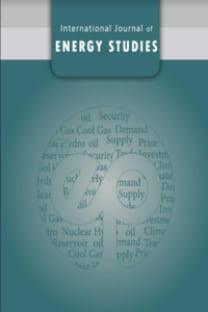A Review of Fuel Cell Types and Applications
A fuel cell is an energy conversion device that converts the chemical energy of a reaction into direct electricity with water and heat by-products. Without the use of a steam boiler or turbine, only the chemical reaction produces electrical energy. It is obtained by electrochemical reaction between hydrogen and oxygen. In this review article, the definition of fuel cell is made and the studies of fuel cell types in the literature are examined. Then, examples of fuel cell applications are given. As a result of the study, it has been observed that thanks to the modular structure of the fuel cells, it can easily adapt from very small scale applications to very large scale.
___
- [1] Safari, F. and Dincer, I. A review and comparative evaluation of thermochemical water splitting cycles for hydrogen production. Energy Conversion and Management. 205 (2020) 112182-1. https://doi.org/10.1016/j.enconman.2019.112182
- [2] Irvine, J. T. S. And Connor, P., (Editors). Solid oxide fuel cells: facts and figures past, present and future perspectives for SOFC Technologies, Springer-Verlag London. (2013). 1-2.
- [3] Li, X. Thermodynamic performance of fuel cells and comparison with heat engines,. Advances in Fuel Cells. 1 (2007) 1-46. https://doi.org/10.1016/S1752-301X(07)80006-8.
- [4] Williams, MC. Fuel Cells. Fuel Cells: Technologies for Fuel Processing. (2011). 11-27. https://doi.org/10.1016/B978-0-444-53563-4.10002-1
- [5] Li, X. Principles of Fuel Cells. Taylor&Francis . (1962) pp. 36.
- [6] Lucia, U. Overview on fuel cells. Renewable and Sustainable Energy Reviews. 30 (2014) 164-169. https://doi.org/10.1016/j.rser.2013.09.025
- [7] Priya, K., Sathishkumar, K. and Rajasekar, N. A comprehensive review on parameter estimation techniques for Proton Exchange Membrane fuel cell modelling. Renewable and Sustainable Energy Reviews. 93 (2018) 121-144. https://doi.org/10.1016/j.rser.2018.05.017.
- [8] Rosli, R.E., Sulong, A.B., Daud, W.R.W., Zulkifley, M.A., Husaini, T., Rosli, M.I., Majlan, E.H. and Haque, M.A. A review of high-temperature proton exchangemembrane fuel cell (HT-PEMFC) system. International Journal of Hydrogen Energy. 42 (2017) 9293-9314. https://doi.org/10.1016/j.ijhydene.2016.06.211.
- [9] Deluca, N.W. and Elabd, Y.A. Polymer Electrolyte Membranes for the Direct Methanol Fuel Cell: A Review. Journal of Polymer Science:Part B. 44 (2006) 2201-2225. https://doi.org/10.1002/polb.20861
- [10] Antolini,E. The stability of molten carbonate fuel cell electrodes: A review of recent improvements. Applied Energy. 88 (2011)4274-4293. https://doi.org/10.1016/j.apenergy.2011.07.009 .
- [11] Brandon, N. and D. Thompsett. (2005). Fuel Cells Compendium (First Edition). Elsevier,148-157.
- [12] Ilbas, M. and Kumuk B. Numerical modelling of a cathode-supported solid oxide fuel cell (SOFC) in comparison with an electrolyte-supported model. Jounal of the Energy Institute. 92 (2019) 682-692. https://doi.org/10.1016/j.joei.2018.03.004.
- [13] Timurkutluk, B., (2013). Development of Redox tolerant solid oxide fuel cell. Ph.D. Thesis, Niğde University Institute of Science, Niğde, 9.
- [14] Şenaktaş, B. (2005). Hydrogen Energy, Production and Applications. Master Thesis, Pamukkale University Institute of Science, Denizli, 91-94.
- Yayın Aralığı: Yılda 4 Sayı
- Başlangıç: 2016
- Yayıncı: Türkiye Enerji Stratejileri ve Politikaları Araştırma Merkezi (TESPAM)
